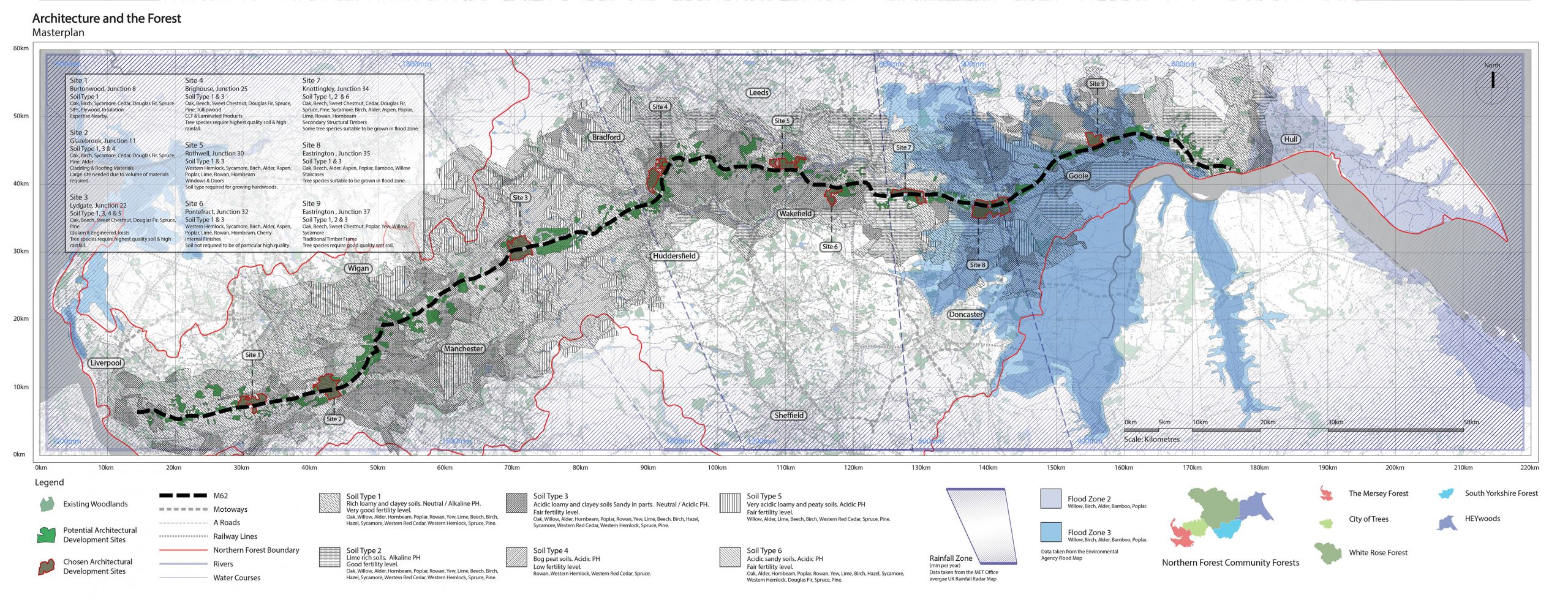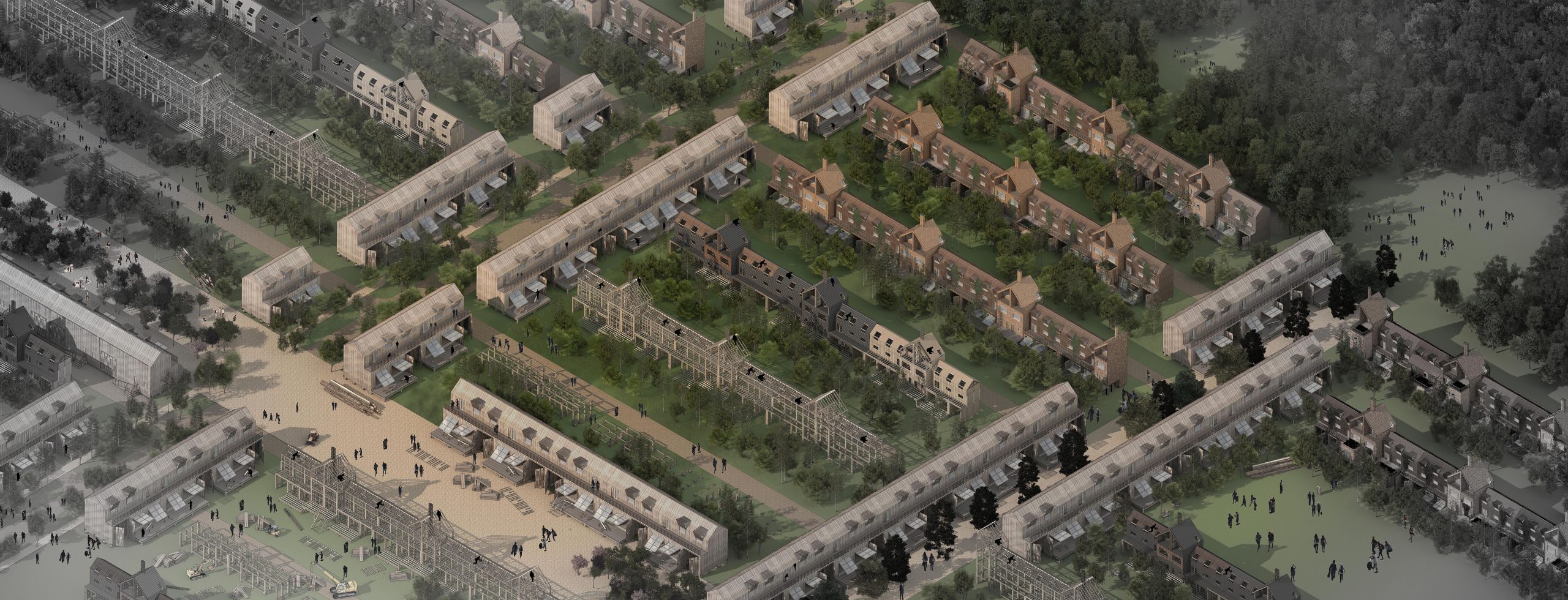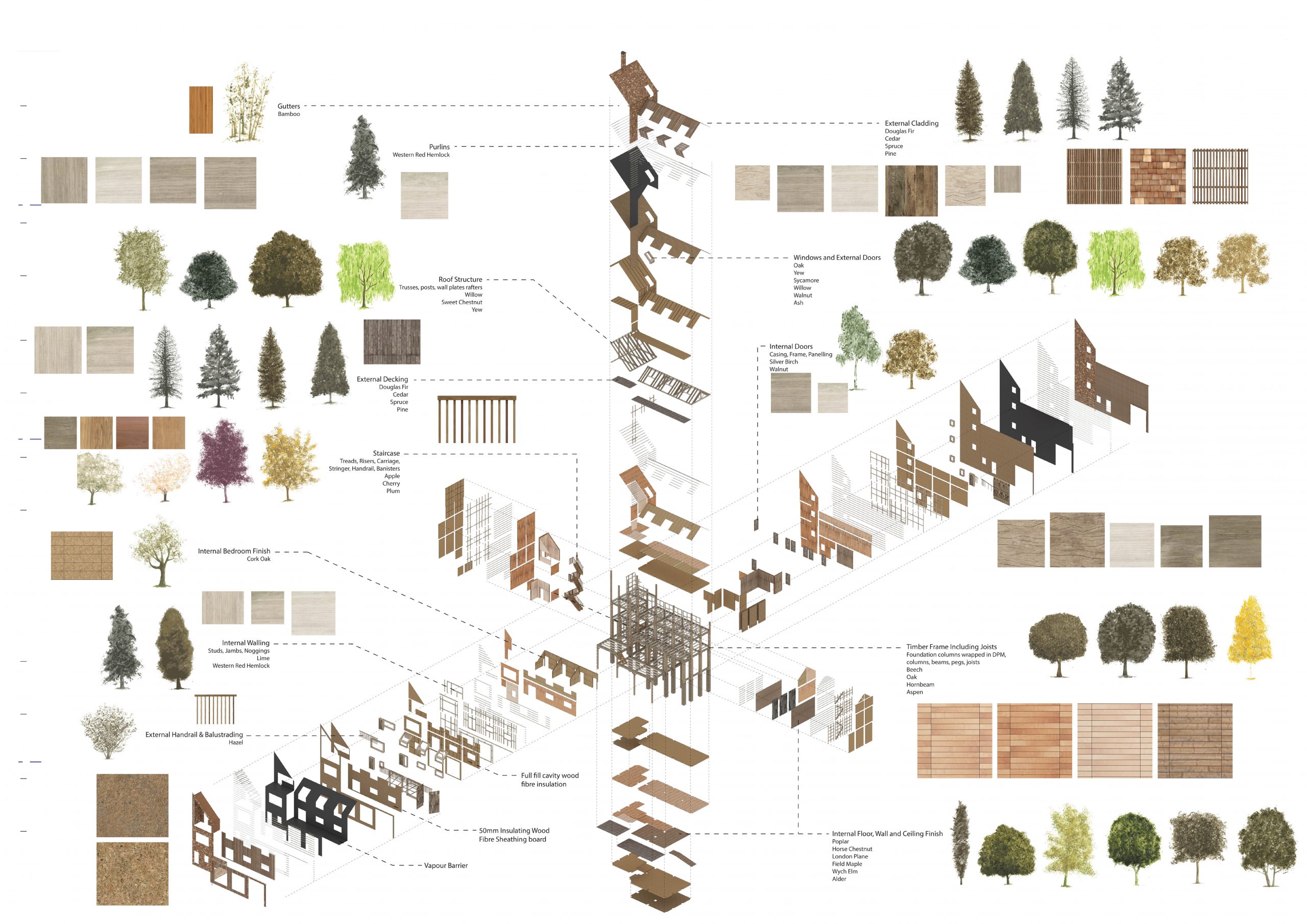Results from a study on production strategies for the Northern Forest.
 As England is launching a consultation on its future tree planting strategy, we’re looking at results of a recent study by Simon Feather. ‘Re-Foresting: A Strategy for Production within the Northern Forest’ investigates collaborative approaches between architects and the forestry sector to define future tree species suitable for tomorrow’s construction in a low-carbon society.
As England is launching a consultation on its future tree planting strategy, we’re looking at results of a recent study by Simon Feather. ‘Re-Foresting: A Strategy for Production within the Northern Forest’ investigates collaborative approaches between architects and the forestry sector to define future tree species suitable for tomorrow’s construction in a low-carbon society.
Co-creating productive forests with timber use in mind
As woodlands are affected by major tree diseases and climate change within the UK, the Forestry Commission and other woodland organisations are actively seeking to plant more diverse commercial forests to remove the risks associated with diseases and monoculture forests. Architects and designers should have input into what will be planted within commercial forests, as they will be designing with the resulting timber resource. A more collaborative approach, involving those throughout the supply chain would ensure that timber and trees are put to their most effective use to mitigate climate change and promote sustainable lifestyles.

Architecture and the Forest – Masterplan
What forest for what outcome
The benefits of managed forests and building with timber are well documented. The growing enthusiasm for timber architecture is likely to continue and increase demand for wood products. A number of large tree-planting schemes like the ‘Northern Forest’, the ‘Great Green Wall of China’ and the ‘African Green Wall’ are planned. Their focuses must include a range of benefits: enhanced carbon sequestration, improving biodiversity and generating timber production for our increasing demand.
Investigations into the current large-scale planting strategies across the world show that very often the choice is made for fast growing softwoods and – outside of Europe – creating mono-cultural forests. From a carbon perspective the choice seems clear: Fast growing species absorb more CO2 than slower grown ones like most hardwoods. However, mono-cultural forests are less beneficial for biodiversity than multi-species forests. In essence this means that no single forest can achieve all targeted outcomes and that a variety of different types of forests for different purposes is needed.

Anatomy of Trees
The need for a comprehensive tree planting strategy
Politicians and planners who make large scale strategic decisions on land use need to embrace wider spheres of knowledge in order to re-think timber production within the UK.
Planting and managing woodlands with a purpose; socially, economically and environmentally, delivers benefits for rural communities. A comprehensive planting strategy, that allows landowners to see the clear benefits of planting different species could be a catalyst to revitalise the UK’s timber industry. Engagement with the architecture profession and construction industry could allow the tree planting strategies that are implemented in coming years to help resolve the continuous housing shortage.
Re-foresting: Modelling productive forest villages
‘Re-Foresting’ is a set of nine productive model villages located along the M62, and within the ‘Northern Forest’. Each village uses the environmental conditions associated with their unique location to grow a different selection of tree species. The harvested materials are used to manufacture the villages’ future timber buildings. The project aims to promote the use of locally grown timber and revitalise the UK’s timber industry.

Forest Village

Exploded timber dwelling axonometric
The right tree, in the right place, for the right purpose
As stated in the ‘Scotland Forestry Strategy 2019-2020’ trees grow according to particular environmental conditions and not by governing land borders. By acknowledging why trees grow better in one environment than another would give reasons for a locality to identify with the planting. Acknowledging what the timber will be used for prior to planting gives reasons for the management strategy and use of the crop occurring at different stages of the cycle. It could also give an indication of its value prior to planting if this timber was used for the purpose of building.

Timber Growth Deal

Timber Selection Choices
Increasing the timber palette
The UK will never be able to rival the levels of softwood tree planting found within Scandinavian countries. The timber manufacturing processes, and products exported from Finland and Sweden are so well established that replicating these in the UK is unlikely to compete on economics alone. The current political context as well as future pandemics call for the UK to become more self-reliant and reduce its level of imports. By planting many tree varieties within our new forests, that are native to the UK and not common across Europe, the UK also has a chance to export timber in the future.
Back to the future of locally grown buildings
Ship building of the 17th century would use a minimum of 10 different timber varieties within a vessel’s construction. Each timber was chosen according to its specific use based on the characteristics it encompassed. In contrast, modern timber dwellings are built from a very limited timber palette of 2 or 3 species at best. Architects and designers need to embrace the great varieties of timber characteristics and celebrate how those can lead to the timber having different functions and applications. By moving past the common misconception British grown timber species are not suitable for use in architecture and allowing architects to design accordingly could lead to exciting new timber buildings.

Ship Building Example
Characteristics for market success
Characteristics that are important to the strategy are maintenance and longevity, fire resistance, anti-bacterial properties, insulative and acoustic properties, colour, ability to be machined and resistance to rot and humidity. Tree planting decisions will have to factor in incremental growth, total annual yields and an effective management system to not be contentious among timber professionals.
‘Re-Foresting’ presents an all-inclusive concept that could be brought to fruition within the ‘The Northern Forest’ project or other suitable stretch of land left from diseased trees.
About the author
Simon Feather is an architect based in Yorkshire. A particular interest in productive landscapes led him to his master’s project, ‘Re-Foresting’ at Leeds Beckett University. Based on a detailed analysis of the Northern Forest the study provides a comprehensive strategy to harness woodlands and their resources to increase their local economic, social and environmental value. The project won a Royal Society of Arts Student Award.
